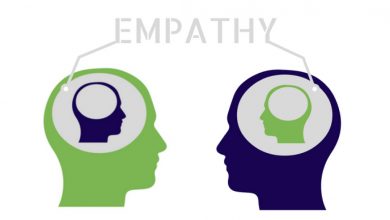Emotional Arc
How to plan the flow of the workshop, in terms of sequencing and making sure that it has an emotional variety. With planning the arc, you as a trainer can determine when certain emotions are more likely to arise and make sure the physical and emotional space is ready for it—e.g., if a slow reflection at the end of the day will possibly bring tears, how to make sure there is enough time before the next activity so people can transition back.

Why did I choose this tool?
This tool, more than many others, is what makes me feel confident in my abilities as a trainer. In planning a workshop, the participants will go on an emotional journey, and to some extent we can predict where they’ll go. The point of this tool is to imagine how participants will experience our workshop, going into the nitty-gritty of how we want them to feel, what we can do to make them feel that way, and how those emotions are likely to lead to the next emotions. This tool helps me create the structure that gives the workshop a strong chance of occurring in the way I wish it to do so. There will always be surprises along the way, and yet this helps us mitigate emotional risk by feeling our way through the hour/day/week agenda.
How does this apply to being a trainer?
As a trainer in nonformal education, we guide participants through a learning experience. In a way, we are like a narrator, walking the participants through a story as they are creating the story. We don’t know which way they’ll always go, but if we plan ahead, we can create the forks in the road that will steer them in relatively predictable directions. While dealing with a group, it can help us a lot knowing how the majority of people are likely to feel. There will always be some people that feel differently, but if we can predict how the majority will feel, we should be able to manage the few who feel differently. At times, we may be training 5 people, sometimes up to 25 or 50 people. With this many people in the room, the emotions can spiral and become out of control quickly—yet another reason why planning a desired sequence of emotions can help to make sure the event flows smoothly. Also, the emotional arc helps me see the fundamental flow of the workshop/training and feel more confident in the bigger picture.
Content
An emotional arc is a concept used heavily in storytelling and playwriting. It is considered one of the forms of narrative arc—physical, intentional, emotional—the one that follows the emotional journey of the characters in the story. According to the Book on Acting, there are three ways to change the emotional arc:
- Change the intensity of the emotion
- Switch from one “emotion family” to another
- Up the Complexity With “Umbrella Arcs”
Changing the intensity of the emotions means either making the emotion stronger or weaker. For example, anger with increased intensity could be fury, and decreased intensity annoyance; sadness with increased intensity could be despair, and decreased intensity “a little down.”
Switching from one “emotion family” to another means switching from something like anger to sadness, or joy to disgust, or fear to joy.
Upping the complexity with “Umbrella Arcs” means adding emotions from different emotion families to create a singular emotional response. This can be like grief, where one feels almost all of the emotions—sadness, relief, anger, confusion, laughter, nostalgia, hope, and gratitude.
When using an emotional arc to design trainings, we can create arcs that will lead to times and spaces where participants will feel safe to express themselves. When people are opening up and expressing deeper emotions, it can lead to sadness and slowness. If we know we want this to happen, we can plan it into the arc and make it work with the schedule. For example, if we plan to have a moment of sadness at the end of the day, where people reflect deeply on what they’ve learned, if we rush them, they may feel frustrated. If we try to have them do a very intense focused exercise afterwards, they may feel lethargic. If we don’t give them a cooldown or some transition to a different emotion at the end, they may carry the sadness into the next part of the training. If we’re running the next part, it may be OK, but it could become even more difficult when we hand those participants to another trainer who was expecting them to be in a different emotional state.
This happened once on It’s Up to Me 2, where one of the trainers ran a very emotionally intense session—participants reflected deeply on their lives and lots of anger and deep sadness was expressed in the space. After lunch, the other trainer tried to run people through a workshop on creativity and it was nearly impossible—the participants were still stuck in their own heads from the morning and not relaxed and open to feeling more creative. The one trainer didn’t communicate to the rest of us how intense her session was going to be or in which emotional direction it was going to go, so it was hard for us to plan the afternoon sessions to connect smoothly with the morning one.
Using it for different parts of the training
The emotional arc can be useful when planning various parts of the training, including the overall agenda and within the specific workshops. With the overall agenda, the emotional arc is not just what happens in the workshops but what happens with the participants, or “characters” throughout the whole training. For example, when participants arrive from a long day of traveling, they are often feeling tired, hungry, grateful to arrive, and nervous to meet new people. If we want them to feel refreshed and excited in the morning, then we can try to give them food and comfort and let them informally meet each other throughout the night—have some light fun and play. As the week progresses, participants are likely to stay up late as they feel more comfortable with the other participants, leading them to be more tired in the morning. If they’re more tired in the mornings, they will likely eat more food because they think it will help them wake up more—so we can plan to serve more food.
In a specific workshop, we can focus on how we want them to feel at the beginning of the session, in the middle, and at the end. For example, when I run Emotional Self-Defense introductory workshops, I want people to typically start feeling uncertain yet curious. In the middle, I want them to feel playful, then a bit challenged, then scared, then impressed, then quite vulnerable and raw, and finally cooled down. At the end, I want them to feel exhausted and grateful.
If I’m planning a workshop before or after ESD, then I can think about what the emotional arc of my workshop should be so that it gels with that of ESD. If I exhaust people before ESD, then it may change the flow of that class. If after ESD, I try to have people feel focused and competitive, it may not work.
How does this apply to creating a safe environment for expression?
The emotional arc helps us create the environment with the right emotion for the type of expression we want—if there is incongruency, then it could feel unsafe. For example, if we want people to reflect on some of their deep learnings, we want people to slow down and focus. If, during that session, we play fast music and only have 3 minutes for this part, it is likely that people will feel rushed and frustrated in trying to slow down. Another example, if we want people to share their dreams, they will probably need to feel motivated, excited, hopeful, and nervous to share. If, however, we run a slow exercise, or have them run around in confusion, or don’t give them the time to gain the courage to come forth, then they may feel confused or hesitant to contribute. Lastly, if we want them to express gratitude, and yet the exercise they just finished had them fiercely competing with each other, it may be hard to make the transition into gratitude.
By planning the emotional arc that we desire in the training, we can more clearly identify the emotions we want participants to feel at different times and better align the overall flow of the event.
Reflection Questions:
- Which emotional transitions do you feel comfortable leading?
- Which emotions do you feel comfortable expressing?
- Which emotions do you NOT feel comfortable expressing?
- What would you do if a fellow trainer gives you participants in a different emotional state than you expected? How would that impact your workshop?
- What would you do if you give another trainer participants in a different emotional state than they had wanted? How would that impact their workshop?
- Have you ever planned the emotional arc of a workshop?
Exercises:
How to apply it in everyday life
- Take one of your previous workshops and map out the flow of emotions, the sequence that they took from start to finish. E.g., happy->sad->confused->frustrated->proud->grateful.
- Look at a previous agenda for one of your projects and try to guess the starting and ending emotion of each workshop.
- Split your workshop into three parts—start, middle, and end—and write down a list of emotions you want people to feel in those different parts.
- Map out the emotional arc for your ideal date with someone—how do you feel at the beginning, the middle, and the end.
- Map out the emotional arc for your ideal workday—how do you feel at the beginning, the middle, and the end.





